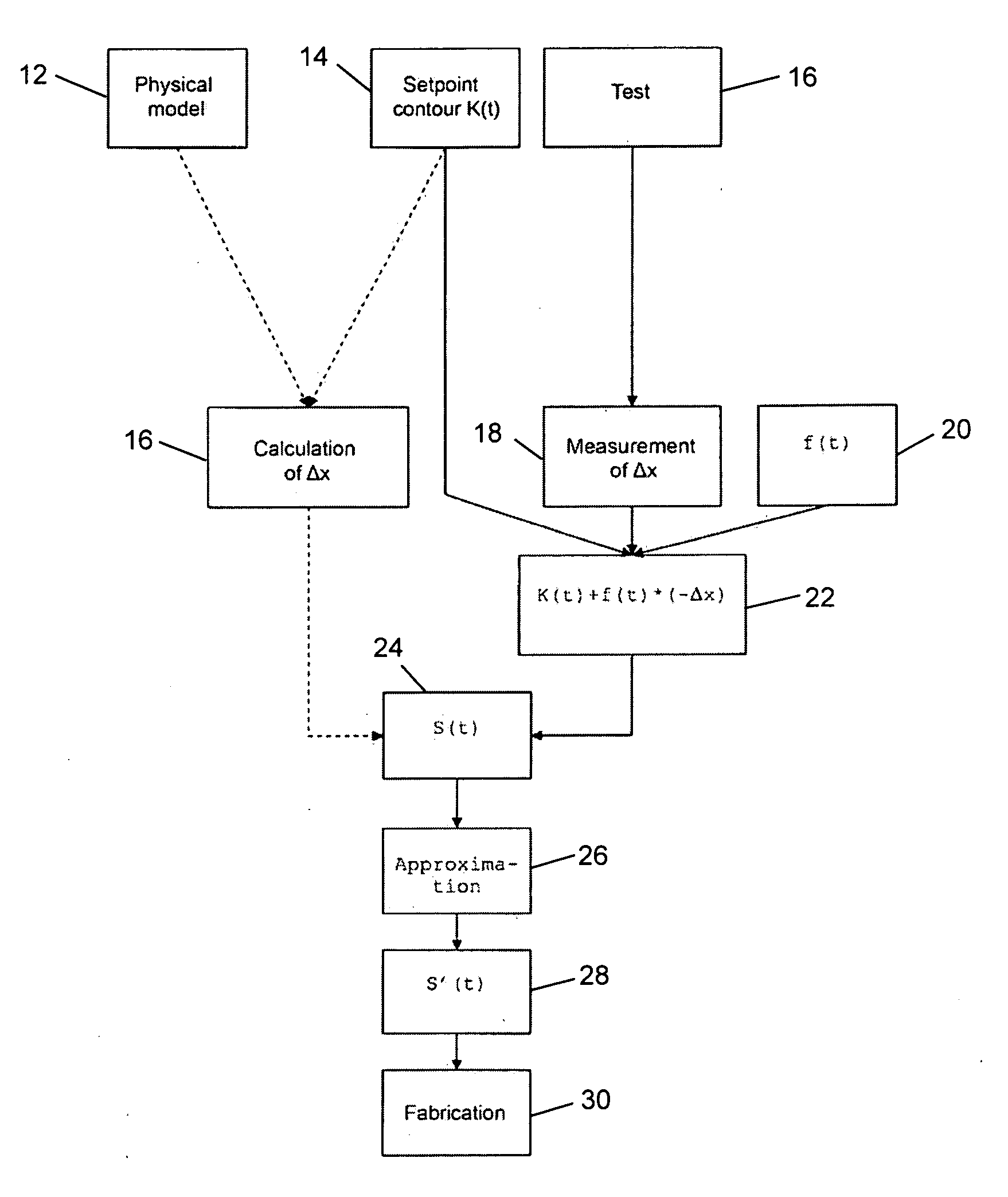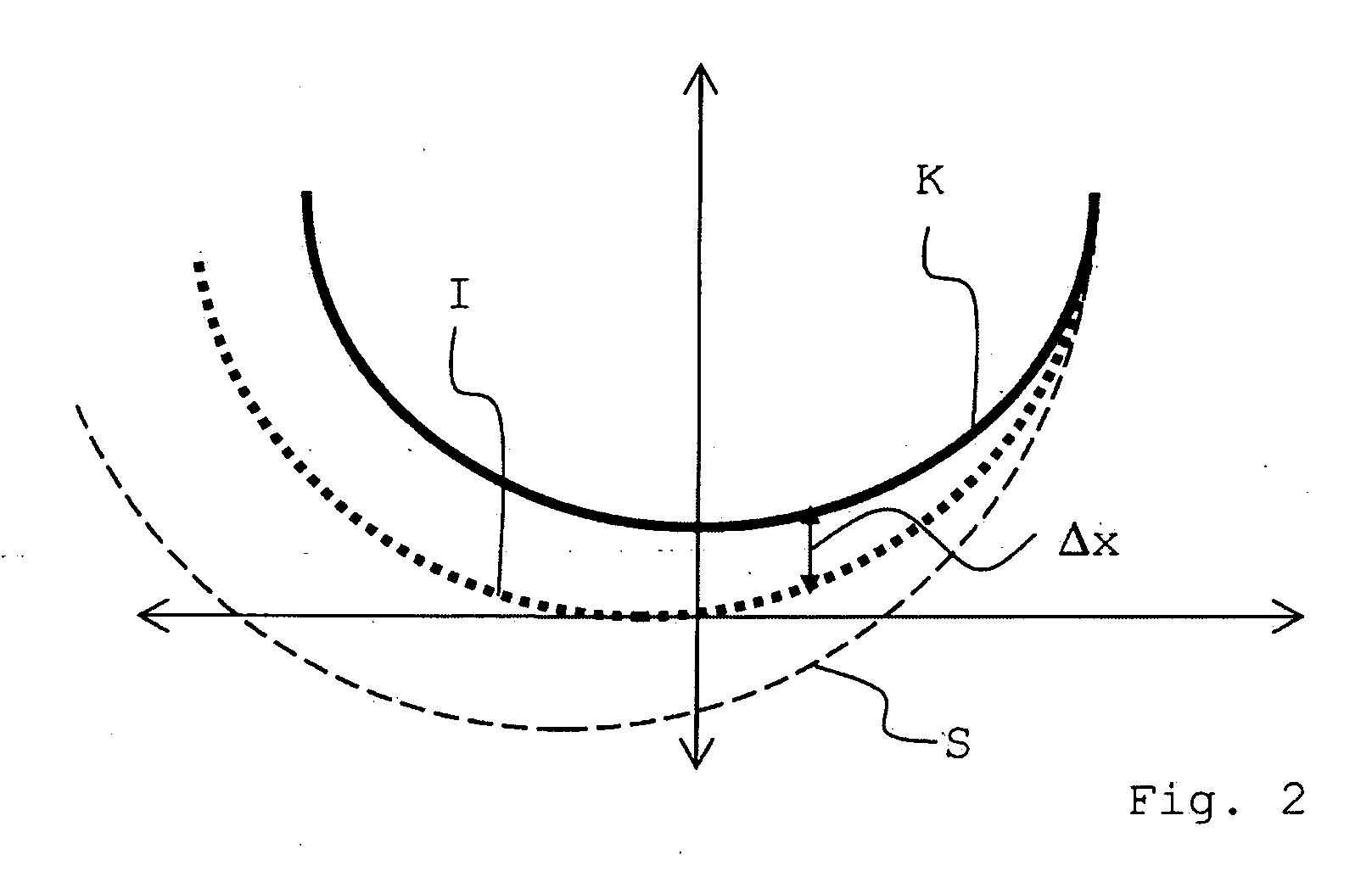Method for near-net-shape machining of curved contours
a machining method and contour technology, applied in the direction of grinding machines, program control, instruments, etc., can solve the problems of increasing the deformation effect of grinding force, local reduction of strength, and substantial deviation between the desired setpoint contour and the actual contour, so as to reduce the number of semi-finished products, increase the machining quality, and reduce the rejection of curved workpieces in particular
- Summary
- Abstract
- Description
- Claims
- Application Information
AI Technical Summary
Benefits of technology
Problems solved by technology
Method used
Image
Examples
Embodiment Construction
[0030]FIG. 1 shows a flow chart of the two variants of the method according to the present invention.
[0031]In the left half of the figure, the “analytical” or “numerical” variant of the method according to the present invention is shown. Components of the diagram corresponding to this variant are indicated by dashed connecting lines.
[0032]Thus, in a step 12 a setpoint contour K(t) which corresponds to the desired workpiece shape after machining is predefined. Furthermore, in a step 10, the physical behavior of the workpiece during machining is stored in the form of a suitable model.
[0033]With the help of analytical or numerical methods, in a step 16, a calculation of an expected measured deviation Δx will now be performed.
[0034]The difference between deviation Δx and setpoint correction K(t) corresponds essentially to path movement S(t) actually to be programmed. The path movement S(t) to be programmed is determined in a step 24 based the difference between deviation Δx and setpoint...
PUM
| Property | Measurement | Unit |
|---|---|---|
| force | aaaaa | aaaaa |
| temperature | aaaaa | aaaaa |
| pressure | aaaaa | aaaaa |
Abstract
Description
Claims
Application Information
 Login to View More
Login to View More - R&D
- Intellectual Property
- Life Sciences
- Materials
- Tech Scout
- Unparalleled Data Quality
- Higher Quality Content
- 60% Fewer Hallucinations
Browse by: Latest US Patents, China's latest patents, Technical Efficacy Thesaurus, Application Domain, Technology Topic, Popular Technical Reports.
© 2025 PatSnap. All rights reserved.Legal|Privacy policy|Modern Slavery Act Transparency Statement|Sitemap|About US| Contact US: help@patsnap.com



